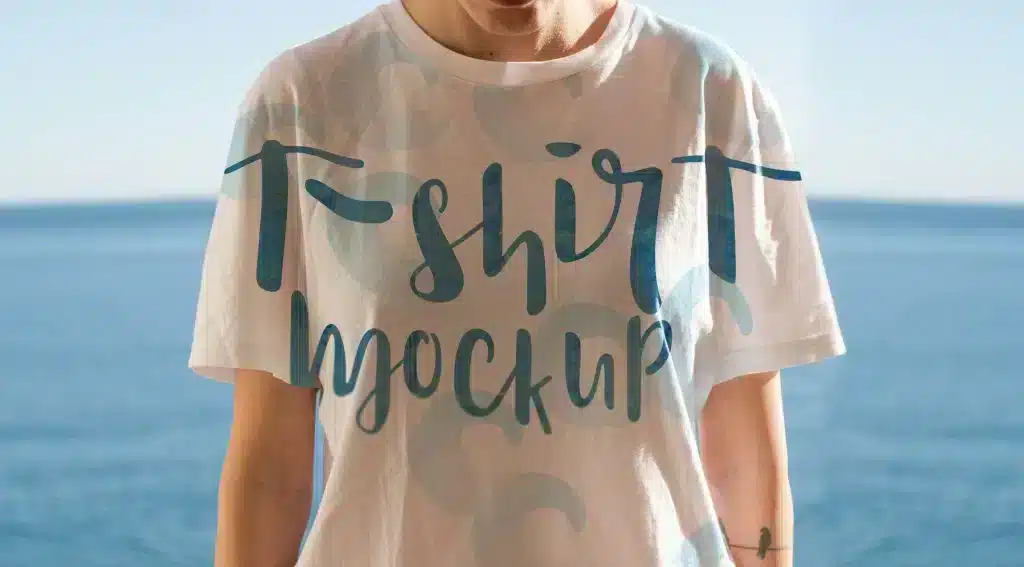Environmentally-friendly approaches have also taken over the t-shirt printing industry, which has embraced eco-friendly T-shirt printing. The idea is trendy and has been attracting large audiences.
It is not just the process of t-shirt production that is harmful to the environment, the ink used in printing also causes environmental damage. This may be surprising to many, but it is a fact.
Our goal here is to give you a fair idea of the eco-friendly t-shirt printing method.
In case you want to expand your knowledge in the area or want to introduce eco-friendly t-shirt printing into your business, here’s everything you need to know.
Why Eco-friendly T-shirt Printing Is The Move?
Apart from the range of environmental benefits, which we will discuss further, eco-friendly t-shirt printing helps establish a positive image for your brand.
And who wouldn’t want that? Especially when there is a visible uproar for an environmentally friendly approach out there!
By introducing eco-friendly printing on your custom t-shirt design, you can appeal to many consumers supporting an environmentally friendly lifestyle.
In addition, it adds value to your brand by showing your concern for the environment and commitment to a healthy lifestyle.
What Are The Eco-friendly T-Shirt Printing Approach?
Using water-based ink for t-shirt printing is the most eco-friendly choice. Unlike plastisol, a commonly used ink in the textile industry, it is water-soluble and does not contain harmful elements.
As it does not leave a plasticized texture, it also gives off a softer, lighter print.
Additionally, these water-based inks provide better color accuracy as well as improved durability.
Water-based Ink Works Great with Organic Cotton
A great way to produce environmentally friendly fabrics is by using organic cotton. And guess what goes perfectly with this type of fabric? Organic cotton is well suited to water-based ink.
Eco-friendly T-shirt Printing Method
Aside from using sustainable fabrics, the first step to eco-friendly t-shirt printing is to use eco-friendly ink.
Among the well-known options, water-based ink is the most common one. Here’s a glance at the methods of eco-friendly t-shirt printing.
Water-based Inks
Water-based inks are made without PVCs or phthalates. These elements are harmful to both the environment and your health.
Besides, the ink does not contain any hazardous metals or leads, ozone-depleting or volatile compounds. Plus, when you want to remove the ink from the screen, there is no need for harsh chemicals.
These types of ink are also much easier to apply and produce a texture that feels soft in hand.
How To Choose The Best Water-based Inks That Are Best For You
Honestly, there are many options in the market that can be overwhelming. So here’s how you can choose the water-based ink that best suits your purpose.
The ink you choose should work on your shop’s press effortlessly.
Choose a supplier you can trust for the ink.
Invest In Eco-friendly Printing Techniques
The next step is to choose a printing technique that pairs well with water-based ink. It is best to use screen printing when using water-based inks or other sustainable inks.
The technique is durable and allows fabrics to last a very long time. Moreover, the amount of waste produced is very small.
What Types of Water-based Inks Are There?
Basically, water-based inks contain water as the primary ingredient. There are a few important things to know about water-based inks.
Less Water Means Stubborn Ink:
The amount of water in ink determines the difficulty of working with it. Water-based ink has a good amount of water.
However, as it starts to lose water, it becomes harder to work with.
When using water-based ink, be careful not to overuse it as it will be difficult to maintain.
Do Not Let Ink Dry Out:
Since the ink is water-based, it becomes hard to work with when it loses water. Hence, you need to keep it moist. Don’t let it get dry.
| Traditional Water-Based Ink | Discharge Ink | Acrylic Ink | |
| Consistency | Runny | Fluid, slightly viscose | Thicker, plastisol-like |
| How do they work? | Alters the garment’s fibers | By using an activator, bleach out the shirt’s existing colors. | Does not actually alter the fibers of the garment. |
| Amount of Water | High | Lower than traditional water-based ink | Lower compared to the other two |
| Texture | Gives off a soft feel | Gives off a soft feel | Gives off a soft feel |
| Character | Must stay wet during printing | Even on dark garments, vibrant colors can be effectively printed | Unlike other water-based inks, it doesn’t need to be managed carefully on the screen. |
Benefits of Screen Printing With Water-based Inks
As compared to traditional inks like plastisol, screen printing with water-based inks offers several major benefits.
- Water-based prints can often be soft enough to match the t-shirt.
- Compared to traditional ink, water-based ink uses fewer toxins and petroleum products, making it more environmentally friendly.
- Water-based inks can be absorbed into the fabric and will last as long as the garment.
- High-detail printing is possible with water-based ink.
- A t-shirt printed with water-based ink allows air to pass through since the pigments are embedded within the fibers.
A Few Do’s of Screen Printing With Water-based Inks
- To coat the screens, use an emulsion that is water-resistant
- Inks should be kept fresh, keeping viscosities close to fresh ink, and screens should be replenished occasionally.
- Make sure you choose the right type of water-based ink.
And Don’ts
- While taking a quick break, don’t forget to keep screens flooded with ink, keeping the image area covered.
- Do not forget to manage the heat. Ensure temperature consistency for optimal performance
- Don’t forget to take advantage of all the different types of water-based special effects available.
What Should You Do When Water-based inks Dry The Screen?
Water-based inks tend to dry out while working. It can happen with acrylic ink that has are top coat water-based. So, what can you do once it dries up on the screen?
It is recommended to add a retarder. For example, you may use simple glycerin to keep the ink from drying up.
A water-based retarder is a good solution. The drying time and open time will be slowed.
One can also go for a reptile fogger to keep the ink wet. The use of lube could be another effective solution to the problem.
What Should You Do When Water-based Inks Break Down the Screens?
One of the other big issues with using water-based ink is that it may break down the screens while being used. To address this situation, one needs to use proper emulsion formulation.
Conclusion
In addition to manufacturing your t-shirt from sustainable material, it is crucial to incorporate eco-friendly printing methods. The use of
Water-based inks are the perfect way of initiating such a process. Additionally, it gives the manufacturer the possibility to provide buyers with the softest, longest-lasting custom shirts. With a few simple steps, a detailed understanding of inks, and some troubleshooting ideas, it is fairly easy to achieve an eco-friendly t-shirt printing process.








